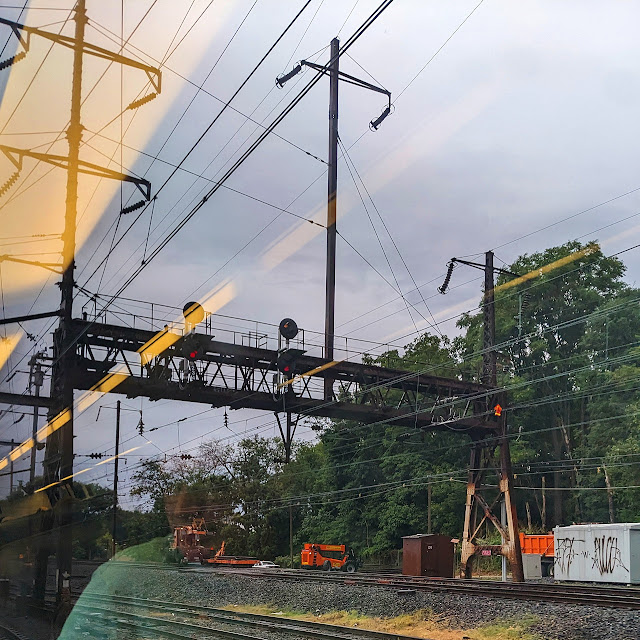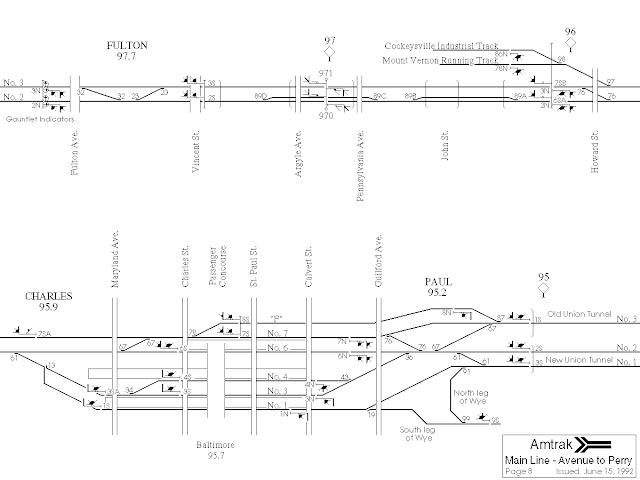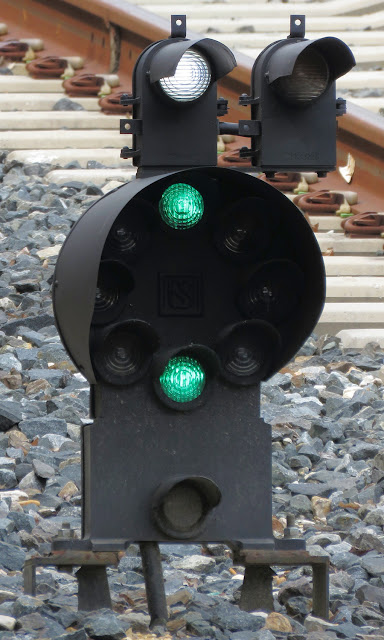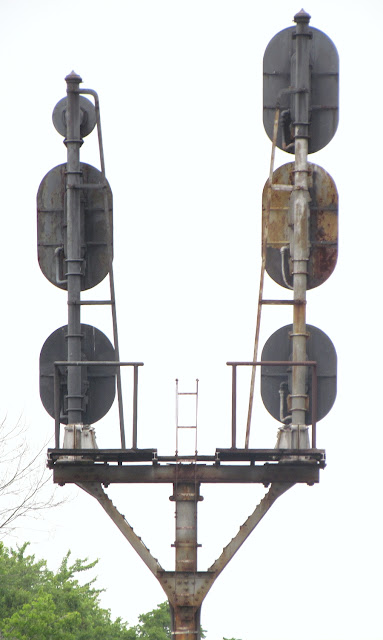The southernmost end of the Pennsylvania's New Yor to Washington Main Lines has seen a number of interesting changes since the funding of the Metroliner Project in the late 1960's. At some point soon the latest and perhaps most significant change will becoming to the NEC where it crosses the DC Beltway and I figured the project might benefit from some photos and diagrams.
Before Metroliner and multiple NEC Improvement Programes, the PRR's Philadelphia to Washington Main Line ran into Union Station without much of a break in its usual 10 mile spacing between interlocking and block stations. From north to south, the 2 to 4 track main line (depending on the year) had a full crossover and Pope's Creek Secondary junction at BOWIE interlocking (MP 120.6), followed by another crossover and junction with DC's freight bypass lines at LANDOVER interlocking (MP 128.8) before finally hitting the Union Terminal division post at mile 134.6. It is LANDOVER interlocking where the latest changes have been taking place.

As the original Baltimore and Potomac line continued through southern DC to the Long Bridge and the RF&P connection, the 1908 line to Union Station was known as the Magruder Branch and split off at LANDOVER interlocking. LANDOVER was a pretty basic three track crossover with an extra switch added for parallel movements on and off the freight bypass. To the south were two, two-track lines and to the north, a single three track line.

The first significant change to the area came in 1970 with the Metroliner project's Capital Beltway Station at milepost 126.5. Constructed to serve suburban business travelers using the Metroliner, the station had high level platforms serving two of the three tracks. Due to the clearance needs of main line freight that still made heavy use of the NEC, the length of the two station platforms were fitted with interlocked gauntlet tracks controlled from LANDOVER tower.

The NEC Improvement Project (NECIP) of the early 1980's would bring a more significant set of changes to the area. In 1978 the DC Metro had opened on an NEC adjacent right of way to a terminal at New Carrollton and the plan was to not only close Capitol Beltway and move its functions to a new NEC platform at New Carrollton, but also shift the local commuter service there as well, allowing for the closure of the local Landover and Lanham stops. Since neither Capital Beltway nor the planned New Carrollton station would have a platform on the easternmost main track #1, a new facing point crossover between tracks 2 and 1 would need to be installed between the New Carrollton and Bapitol Beltway platforms as part of a new interlocking called CARROLL.
 |
Limited speed #21 switch at CARROLL facing south with the New Carrollton station just out of sight.
|
One knock-on effect of the new CARROLL interlocking was the removal of
the #21 (nee-#7) switch at LANDOVER interlocking. Located on a curve,
the maintenance intensive crossover was arguably redundant as most
trains out of DC would need to make the New Carrollton stop anyway and
therefore would have no reason to cross over to the platformless track
#1.
 |
| LANDOVER tower and interlocking northward past the #23 and removed #21 switches |
Moreover, Conrail had ended electrified operations and changes in overall freight patterns in the northeast allowed for the removal of the parallel routing over the former LANDOVER #15 switch. Although trains to/from the renamed Conrail Landover Line could access all three NEC main tracks to/from the north, no NEC train from the south could access main track #1 until past New Carrollton. Further emphasizing the decline in NEC freight, a gauntlet track would only be installed on track #2 at the New Carrollton station.
 |
| LANDOVER #91 and #32 switches with former Conrail Landover Line to the left. |
The NEC CTC project of the 1980's would ultimately close LANDOVER as a manned interlocking station and the Chase, MD wreck would banish most through freight, but the next significant change would not emerge until the rollout of the Metroliner replacement Acela service around the year 2000. Changes in business travel eliminated New Carrollton as a stop for Amtrak's premium high speed service while increases in MARC Train commuter service began to cause conflicts. This resulted in a new 80mph high speed turnout being constructed at CARROLL for southbound trains on the center track #2 to cross over track #3 through the New Carrollton station instead of having to effectively wrong rail all the way to the crossover at LANDOVER on a 45mph Approach Medium signal.
 |
New 80mph high speed turnout at CARROLL
|
Although this solved the problem for fast southbound trains on the center express track, New Carrollton emerged as a major bottleneck for northbound trains out of DC. Although the track #2 gauntlet (ultimately removed ~2003) was protected by its own signal south of the station platform, that signal was still only 3000 feet from the 45mph #21 turnout at CARROLL, requiring an Approach Limited at LANDOVER and the associated 45mph speeds. This brings us to today with Amtrak's long running LANDOVER replacement project.
 |
Northbound HANSON signals in relation to southbound LANDOVER signals and tower.
|
Designated HANSON interlocking for the adjacent John Hanson Parkway (US 50), it is located directly north of LANDOVER's southbound signal bridge and will consist of a complete 3-track crossover, restoring access to the previously cut off #1 track for Amtrak use, with 2 of the 4 crossovers of the 80mph high speed variety.
This will allow northbound trains not stopping at New Carrollton, like MARC expresses, to take the 80mph diverging route to directly bypass the station and subsequent 45mph turnout. Other non-stop northbound trains like Acelas can use the other high speed turnout and use track #3 jump around locals making the New Carrollton stop on track #2. Said northbound would return to track #2 via the 80mph HST at CARROLL interlocking.



















